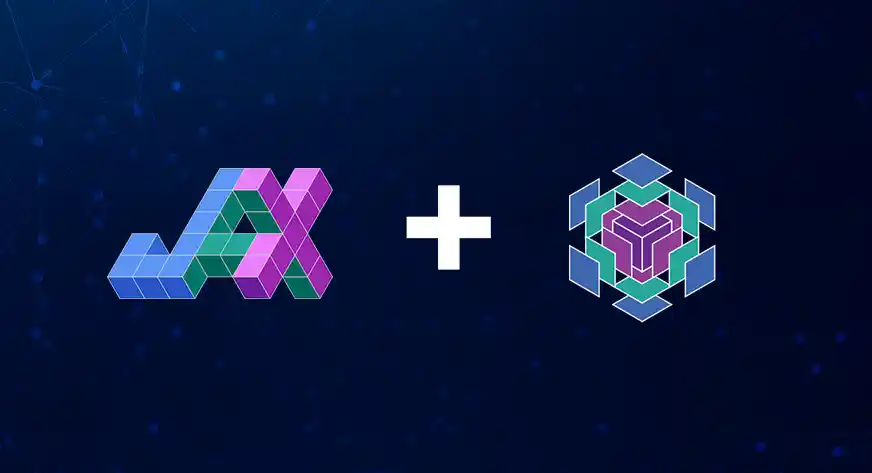Introduction
Transformers have revolutionized various domains of machine learning, notably in natural language processing (NLP) and computer vision. Their ability to capture long-range dependencies and handle sequential data effectively has made them a staple in every AI researcher and practitioner’s toolbox. However, the traditional Transformer architecture has limitations when it comes to specific types of data like time series. This blog post delves into the innovative approach of i-Transformer, which adapts the Transformer architecture for time series forecasting. We will see how it works and performs better than traditional transformers in multivariate time series forecasting.
Learning Objectives
- Explain the limitations of standard Transformers in time series forecasting, particularly regarding large lookback windows and modeling multivariate time series.
- Introduce the i-Transformer as a solution to these challenges by inverting the dimensional focus of the Transformer architecture.
- Highlight key innovations of i-Transformer, such as variate-specific tokens, attention mechanisms on inverted dimensions, and enhanced feed-forward networks.
- Provide an architectural overview of i-Transformer, including its embedding layer, attention mechanisms, and position-wise feed-forward networks.
- Detail how the inverted transformer components in iTransformer differ from traditional usage in layer normalization, feed-forward networks, and self-attention, emphasizing their effectiveness in handling multivariate time series forecasting.
Understanding the Limitations of Standard Transformers in Time Series Forecasting
The standard Transformer architecture, while powerful, faces challenges when applied directly to time series data. This stems from its design, which primarily handles data where relationships between elements are critical, such as words in sentences or objects in images. Time series data, however, presents unique challenges. This includes varying temporal dynamics and the importance of capturing long-term dependencies without losing sight of short-term variations.
Traditional Transformers in time series often struggle with:
- Handling large lookback windows: As the amount of past information increases, Transformers require more computational resources to maintain performance. This can lead to inefficiencies.
- Modeling multivariate time series: When dealing with multiple variables, standard Transformers may not effectively capture the unique interactions between different time series variables.
The i-Transformer Solution
Researchers at Tsinghua University and Ant Group have together come up with a solution to these issues – the i-Transformer. It addresses these challenges by inverting the dimensional focus of the Transformer architecture. Instead of embedding time steps as in traditional models, i-Transformer embeds each variable or feature of the time series as separate tokens. This approach fundamentally shifts how dependencies are modeled, focusing more on the relationships between different features across time.

Key Innovations of i-Transformer
- Variate-specific Tokens: The i-Transformer treats each series or feature within the dataset as an independent token. This allows for a more nuanced understanding and modeling of the interdependencies between different variables in the dataset.
- Attention Mechanism on Inverted Dimensions: This restructured focus helps in capturing multivariate correlations more effectively. It makes the model particularly suited for complex, multivariate time series datasets.
- Enhanced Feed-forward Networks: Applied across these variate tokens, the feed-forward networks in i-Transformer learn nonlinear representations that are more generalizable across different time series patterns.
Architectural Overview
The architecture of i-Transformer retains the core components of the original Transformer, such as multi-head attention and positional feed-forward networks, but applies them in a way that is inverted relative to the standard approach. This inversion allows the model to leverage the inherent strengths of the Transformer architecture while addressing the unique challenges posed by time series data.

- Embedding Layer: Each variate of the time series is independently embedded, providing a distinct representation that captures its specific characteristics.
- Attention Across Variates: The model applies attention mechanisms across these embeddings to capture the intricate relationships between different parts of the time series.
- Position-wise Feed-forward Networks: These networks process each token independently, enhancing the model’s ability to generalize across different types of time series data.
How Inverted Transformers Differ from Traditional Transformers
The inverted transformer components in the iTransformer represent a shift in how traditional components are used and leveraged to handle multivariate time series forecasting more effectively.
Let’s break down the key points:
1. Layer Normalization (LayerNorm)
Traditional Usage: In typical Transformer-based models, layer normalization is applied to the multivariate representation of the same timestamp. This process gradually merges variates, which can introduce interaction noises when time points don’t represent the same event.
Inverted Usage: In the inverted iTransformer, layer normalization is applied differently. It’s used on the series representation of individual variates, helping to tackle non-stationary problems and reduce discrepancies caused by inconsistent measurements. Normalizing variates to a Gaussian distribution improves stability and diminishes the over-smoothing of time series.
2. Feed-forward Network (FFN)
Traditional Usage: FFN is applied identically to each token, including multiple variates of the same timestamp.
Inverted Usage: In the inverted iTransformer, FFN is utilized on the series representation of each variate token. This approach allows for the extraction of complex representations specific to each variate, enhancing forecasting accuracy. The stacking of inverted blocks helps encode observed time series and decode representations for future series using dense non-linear connections, similar to recent works built on MLPs.
3. Self-Attention
Traditional Usage: Self-attention is typically applied to facilitate temporal dependencies modeling in previous forecasters.
Inverted Usage: In the inverted iTransformer, self-attention is reimagined. The model regards the whole series of one variate as an independent process. This approach allows for comprehensive extraction of representations for each time series, which are then used for queries, keys, and values in the self-attention module. Each token’s normalization on its feature dimension helps reveal variate-wise correlations, making the mechanism more natural and interpretable for multivariate series forecasting.
So the inverted transformer components in iTransformer optimize the usage of layer normalization, feed-forward networks, and self-attention for handling multivariate time series data, leading to improved performance and interpretability in forecasting tasks.
Comparison Between Vanilla Transformer and iTransformer

| Vanilla Transformer (Top) | iTransformer (Bottom) |
| Embeds the temporal token containing the multivariate representation of each time step. | Embeds each series independently to the variate token, highlighting multivariate correlations in the attention module and encoding series representations in the feed-forward network. |
| Depicts points of the same time step with different physical meanings due to inconsistent measurements embedded into one token, losing multivariate correlations. | Takes an inverted view on time series by embedding the whole time series of each variate independently into a token, aggregating global representations of series for better multivariate correlating. |
| Struggles with excessively local receptive fields, time-unaligned events, and limited capacity to capture essential series representations and multivariate correlations. | Utilizes proficient feed-forward networks to learn generalizable representations for distinct variates encoded from arbitrary lookback series and decoded to predict future series. |
| Improperly adopts permutation-invariant attention mechanisms on the temporal dimension, weakening its generalization ability on diverse time series data. | Reflects on Transformer architecture and advocates iTransformer as a fundamental backbone for time series forecasting, achieving state-of-the-art performance on real-world benchmarks and addressing pain points of Transformer-based forecasters. |
Performance and Applications
The i-Transformer has demonstrated state-of-the-art performance on multiple real-world datasets, outperforming both traditional time series models and more recent Transformer-based approaches. This superior performance is particularly notable in settings with complex multivariate relationships and large datasets.

Applications of i-Transformer span various domains where time series data is critical, such as:
- Financial Forecasting: For predicting stock prices, market trends, or economic indicators where multiple variables interact over time.
- Energy Forecasting: In predicting demand and supply in energy grids, where temporal dynamics are influenced by multiple factors like weather conditions and consumption patterns.
- Healthcare Monitoring: For patient monitoring where multiple physiological indicators need to be analyzed in conjunction.
Conclusion
The i-Transformer represents a significant advancement in the application of Transformer models to time series forecasting. By rethinking the traditional architecture to better suit the unique properties of time series data, it opens up new possibilities for robust, scalable, and effective forecasting models. As time series data becomes increasingly prevalent across industries, the importance of models like the i-Transformer will surely grow. It will potentially define new best practices in the field of time series analysis.
Key Takeaways
- i-Transformer represents an innovative adaptation of the Transformer architecture specifically designed for time series forecasting.
- Unlike traditional Transformers that embed time steps, i-Transformer embeds each variable or feature of the time series as separate tokens.
- The model incorporates attention mechanisms and feed-forward networks structured in an inverted manner to capture multivariate correlations more effectively.
- It has demonstrated state-of-the-art performance on real-world datasets, outperforming traditional time series models and recent Transformer-based approaches.
- The applications of i-Transformer span various domains such as financial forecasting, energy forecasting, and healthcare monitoring.
Frequently Asked Questions
A. i-Transformer is an innovative adaptation of the Transformer architecture specifically designed for time series forecasting tasks. It embeds each variable or feature of a time series dataset as separate tokens, focusing on interdependencies between different variables across time.
A. i-Transformer introduces variate-specific tokens, attention mechanisms on inverted dimensions, and enhanced feed-forward networks to capture multivariate correlations effectively in time series data.
A. i-Transformer differs by embedding each variate as a separate token, applying attention mechanisms across variates. Additionally, it leverages feed-forward networks on series representations of each variate. This optimizes the modeling of multivariate time series data.
A. i-Transformer offers improved performance over traditional time series models and recent Transformer-based approaches. It is particularly good at handling complex multivariate relationships and large datasets.
A. i-Transformer has applications in various domains such as financial forecasting (e.g., stock prices), energy forecasting (e.g., demand and supply prediction in energy grids), and healthcare monitoring (e.g., patient data analysis). It also helps in other areas where accurate predictions based on multivariate time series data are crucial.
A. The architecture of i-Transformer retains core Transformer components like multi-head attention and positional feed-forward networks. However, it applies them in an inverted manner to optimize performance in time series forecasting tasks.
By Analytics Vidhya, May 13, 2024.












